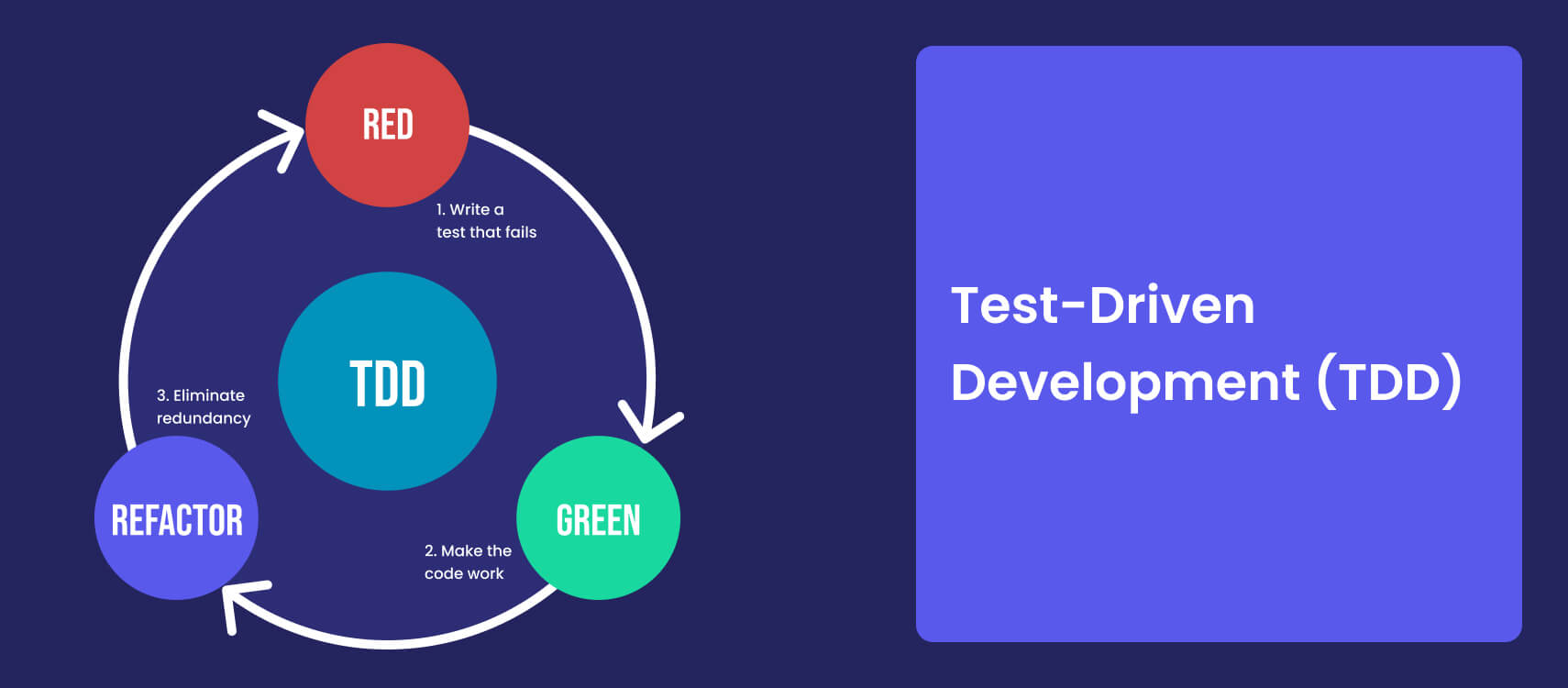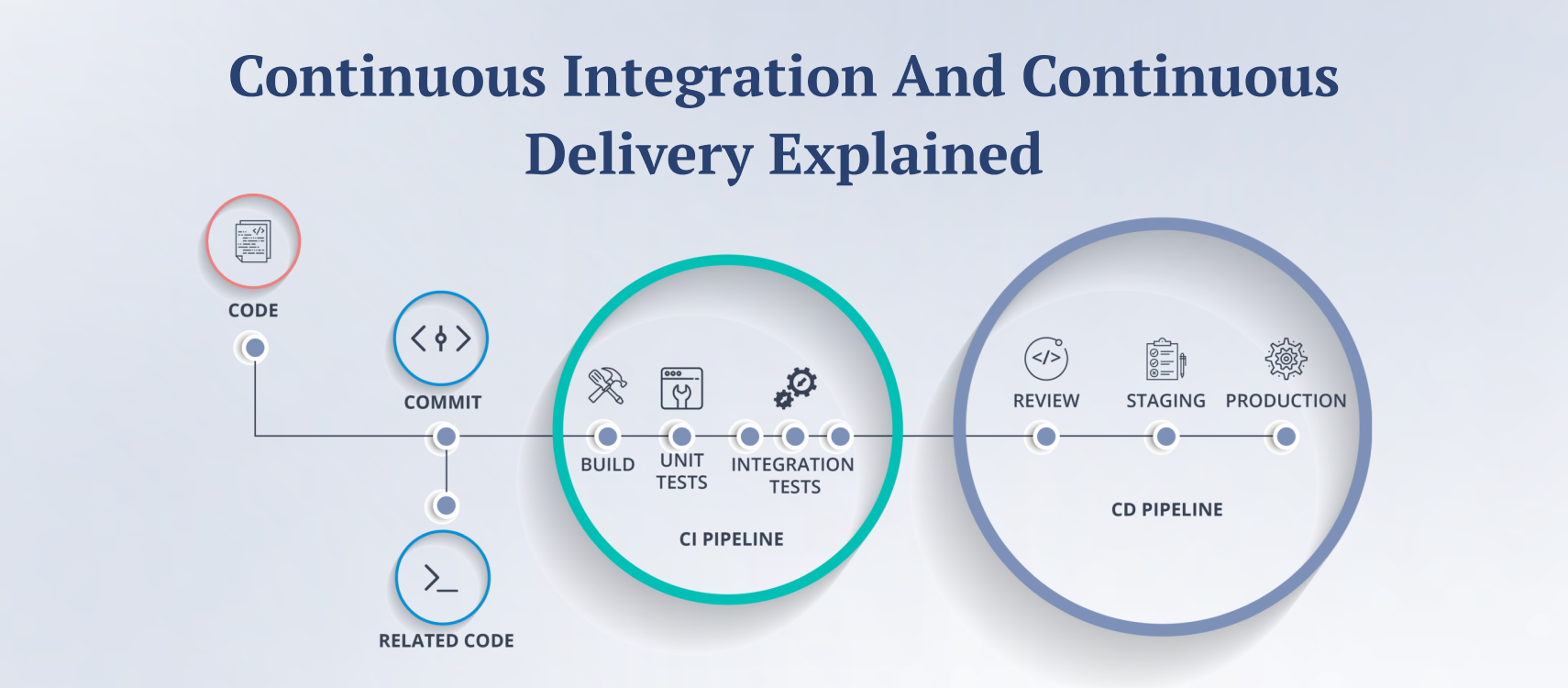Table of Contents
- TDD Background Explained
- Test-Driven Development (TDD) Steps
- Best Test-Driven Development Practices
- TDD Pros & Cons
- Final Notes
Test-Driven Development (TDD) is an extension of the continuous integration and continuous development (CI/CD) approach, a part of the DevOps best practices for software development. But just saying that is not enough as the approach evolved over the years and successfully became part of large-scale software development projects all over the globe. While time and again, global thought leaders from the tech world point out the importance of good DevOps practices, Test-Driven Development (TDD) stands out.
Let’s Understand the Background of Test-Driven Development (TDD)
More than two decades ago, the Test-Driven Development (TDD) principle was introduced to write clean and effective code. The single ruling principle of the concept is to rectify code only in the production environment or refactoring the code following the negative test results. The approach shortened the development and test cycles and allowed multiple repetitive tests to achieve the expected results.
Understanding Test-Driven Development (TDD) Steps
Now, we will explore the different steps in the Test-Driven Development (TDD) cycle. Three types of color-coded tests are added: Red, or the test that is bound to fail; Green, or a neat size of code that will easily pass the test; and Refactoring or cleaning the code when it grows. In between these principal steps, there are also a few intermittent steps. Let’s explain these steps briefly one by one.
Red or the Test That is Bound to Fail
In Test-Driven Development (TDD), as per the number of features, many separate test cases are created. Even separate test cases are created for new features or any updated functionality. Unlike traditional enterprise app development environments, such multiple tests are carried out even before writing the source code. This step is more focused on finding the requirements through failed test results.
Now, Test Multiple Test Cases
When multiple tests are run for different features and updates, many of them are bound to fail because of the outdated existing code, and this points toward the need to write new code.
Green or Testing New and Small Sizes of Code
This step requires all the tests to deliver positive results, and hence, new and byte-sized code is written for these tests. This is done to create the small building blocks for developing bigger functions incrementally over time.
Whenever Any Test Fails, Write and Test Again to Pass
Run tests for all small code blocks for functions, and whenever any of them fails, go back to the previous step, write the code, and test again. The objective is to pass all the test cases and create a lot of foolproof functional building blocks for the software features.
Refactoring
When the app development team writes the code and runs tests again and again to make the small building blocks pass tests, the code base simultaneously becomes bigger, requiring cleaning up and maintenance we call refactoring.
There are many ways that this refactoring is done efficiently. First of all, duplicate code is remove, all object names and their definitions are aligned to the roles they play, the large functions are for better usability and maintenance, and all tests are again to make sure no unintended functional changes are made.
Best Test-Driven Development (TDD) Practices
If you want to make code cleaner and more efficient. Here are some time-tested best practices that will help.
Keep Module of Related Functions Small
When you keep the module consisting of multiple related functions small, you can test and debug easily. This will also allow you to make progress faster with different modules.
Follow the Time-honored Test Structure
As in a Test-driven development (TDD) environment, you have to run tests now and then and follow the most proven test structure for best results.
- Setup the Test Environment: Ensure the system is prepare enough for successful testing. And if not sure, make a prior test of the system performance.
- Follow the Intended Test Execution Path: While running the test right on target, always stay alert to check outputs.
- Validate the Test: When the test results are out, declare the results in clear terms, such as Passed or Failed.
- System Restoration: After the test is done, restore and clean the system for the next test to take place.
- Keep Tests Byte-sized: In the Test-Driven Development (TDD) environment, we keep test cases smaller for best output. So, create test cases that allow faster execution.
Test-Driven Development (TDD): Pros and Cons
Test-Driven Development (TDD), focusing on incremental development through continuous testing, offers many advantages. But it has its shortcomings as well. Considering both sides of the fence, here we list the key pros and cons.
Pros
- When you create test cases in TDD, you emphasize functional output, and this helps deliver the working functionalities faster.
- It is found that even after writing a multitude of test cases for every module, the entire coding, testing, and refactoring time is much shorter compared to the traditional development environment.
- A small test run every once in a while helps remove the bugs early and efficiently.
- Since byte-sized code is written to pass test cases, the entire code becomes modular, allowing flexible reuses.
- Developers have the scope of testing regression at every step or when testing after every small update.
- Test-Driven Development (TDD) can also be a great fit to allow automation testing tools to carry out deeper searches and tests through every different code path.
- Because of small test cases and breaking complex functions into small building blocks, documentation becomes easier and often self-explanatory.
Cons
- Test-driven development (TDD) may not be very appropriate in certain cases where functional tests are prioritized.
- Test-driven development (TDD) can go wrong if developers, instead of testers, write the test cases. The test cases may show identical errors as the code, just because the same people are also behind the testing.
- It has been seen that in Test-Driven Development (TDD), when a lot of tests are passed, complacency sets in. This often results in less than the required testing at later stages, like integration, leading to several issues.
- The ultimate onus in Test-Driven Development (TDD) remains on the testers and their ability to write good test cases. In the case of badly written tests, the development and test cycle can be unnecessarily extended, leading to a huge maintenance cost burden.
Ending Notes
In conclusion, we must spare a few words on ideal use case scenarios for Test-Driven Development (TDD). For large enterprise software development projects where modularity and reusability are cornerstones of system extension capabilities, TDD is often the ideal choice. The separation of modules allows large enterprise software systems to reuse the functional modules across multiple systems with ease.










